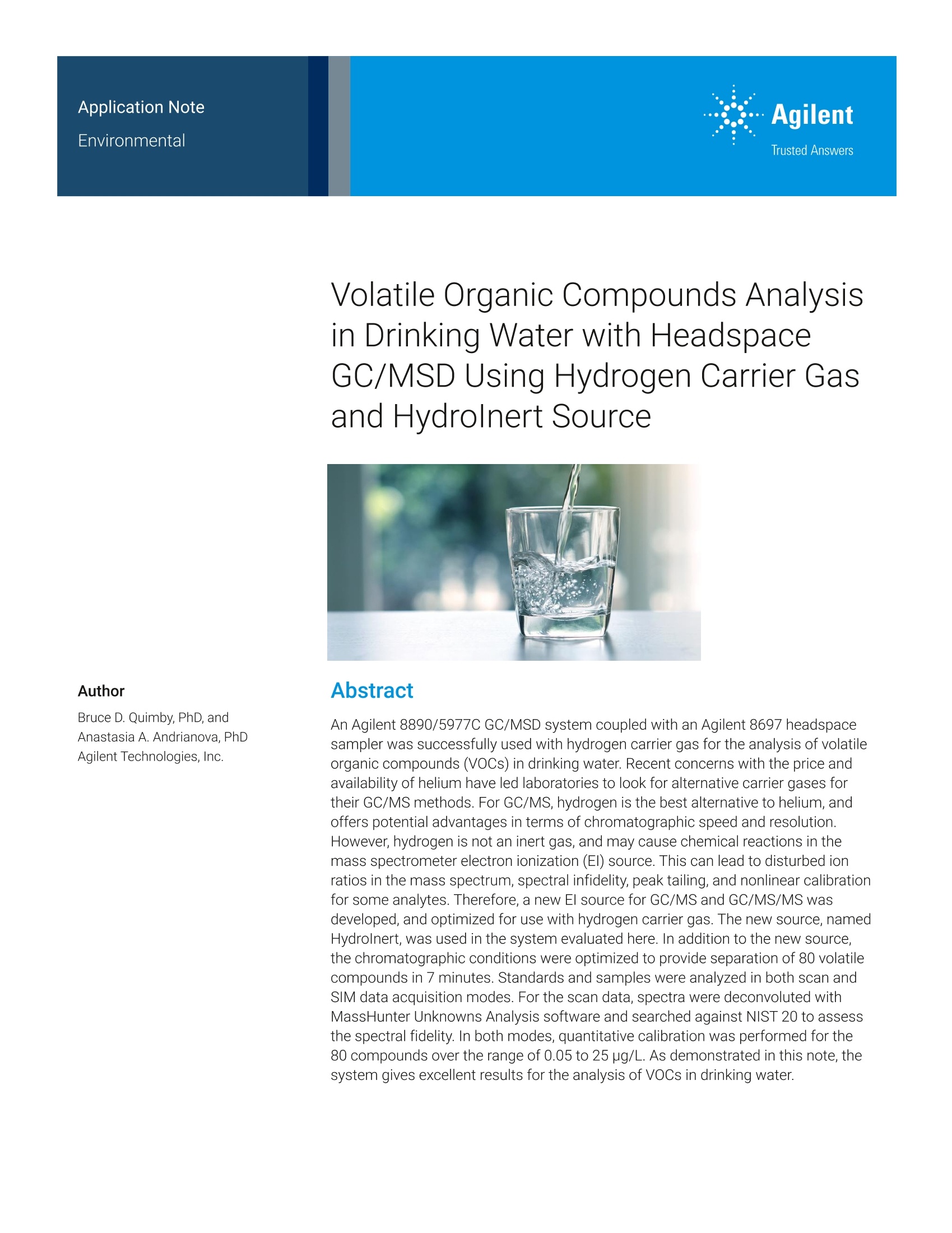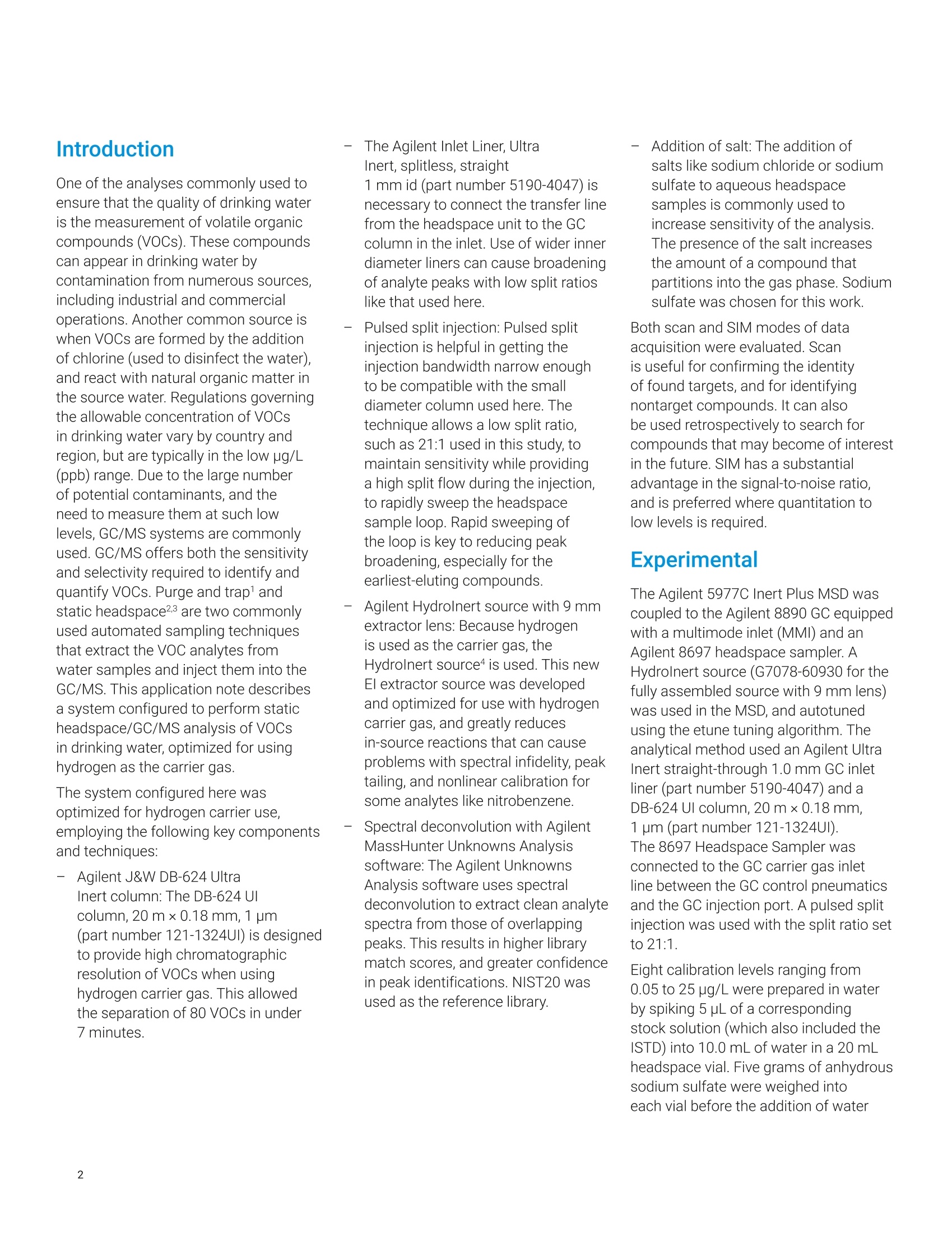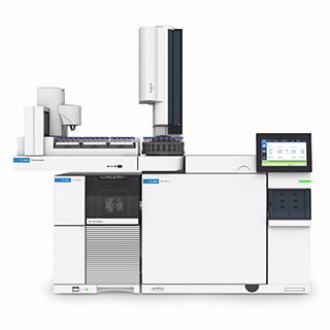Volatile Organic Compounds Analysis in Drinking Water with Headspace GC/MSD Using Hydrogen Carrier Gas and HydroInert Source
检测样品 饮用水
检测项目 VOCs

 钻石会员
3278 篇解决方案
钻石会员
3278 篇解决方案
方案详情文
智能文字提取功能测试中
IntroductionOne of the analyses commonly used to ensure that the quality of drinking water is the measurement of volatile organic compounds (VOCs). These compounds can appear in drinking water by contamination from numerous sources, including industrial and commercial operations. Another common source is when VOCs are formed by the addition of chlorine (used to disinfect the water), and react with natural organic matter in the source water. Regulations governing the allowable concentration of VOCs in drinking water vary by country andregion, but are typically in the low μg/L (ppb) range. Due to the large number of potential contaminants, and the need to measure them at such low levels, GC/MS systems are commonlyused. GC/MS offers both the sensitivity and selectivity required to identify and quantify VOCs. Purge and trap1 and static headspace2,3 are two commonly used automated sampling techniques that extract the VOC analytes from water samples and inject them into the GC/MS. This application note describes a system configured to perform static headspace/GC/MS analysis of VOCs in drinking water, optimized for using hydrogen as the carrier gas.
关闭-
1/13

-
2/13

还剩11页未读,是否继续阅读?
继续免费阅读全文产品配置单
安捷伦科技(中国)有限公司为您提供《Volatile Organic Compounds Analysis in Drinking Water with Headspace GC/MSD Using Hydrogen Carrier Gas and HydroInert Source》,该方案主要用于饮用水中VOCs检测,参考标准《暂无》,《Volatile Organic Compounds Analysis in Drinking Water with Headspace GC/MSD Using Hydrogen Carrier Gas and HydroInert Source》用到的仪器有 Agilent 5977C GC/MSD。
我要纠错
相关方案

 咨询
咨询